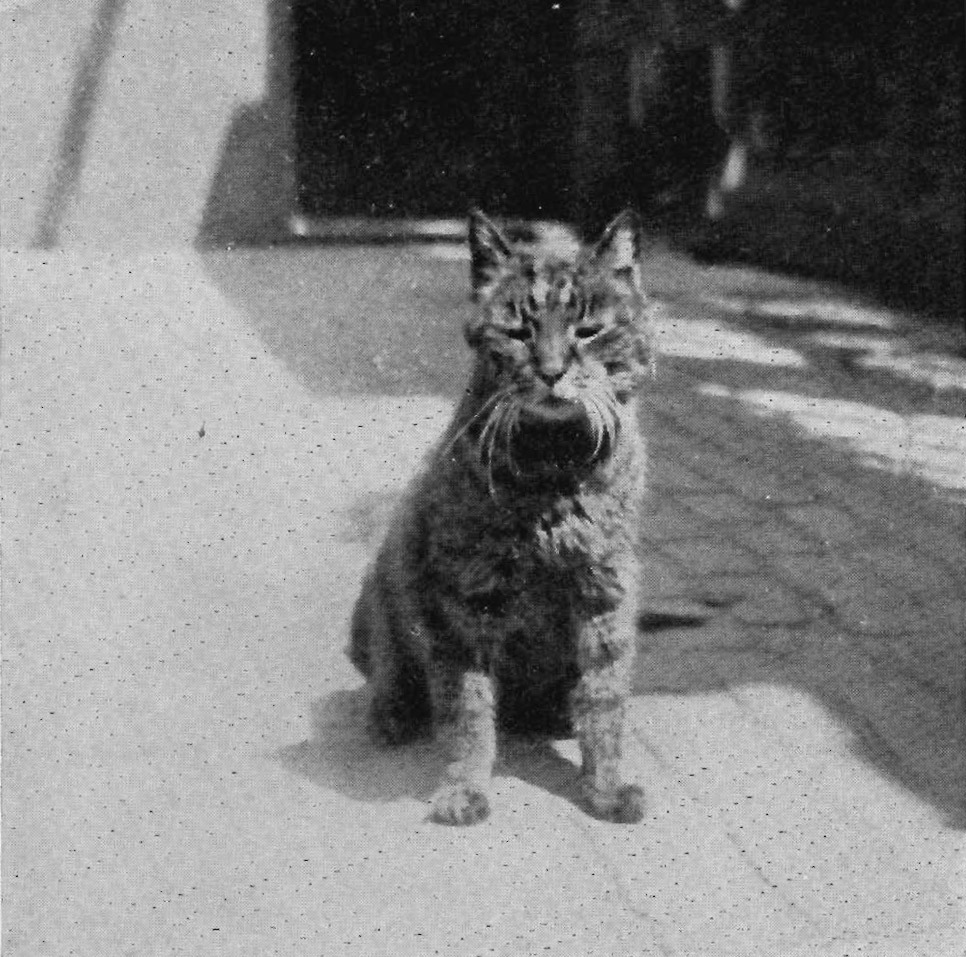.....energetically acquired a large number of antiquities and manuscripts during the course of his work in Egypt and Mesopotamia. His three trips to these countries in 1887, 1888 and 1890 are described rather colourfully in his book 'By Nile and Tigris' (London, 1920). He gained the Arabic nicknames of "Father of Skulls" and "Father of Antiquities" as a direct result of his collecting activities in Egypt and Sudan. He was a prolific writer on Assyriological and Egyptological matters, and edited Syriac and Ethiopian manuscripts.
His books contain a minority view, for the time, that Egyptian relilgion was derived from the neighboring African countries. He wrote a lot of books, popular books, but our interest now, is that he wrote an the obituary for a cat.
Not an mummified cat he brought back, but the cat who for 20 years guarded the entrance of the Museum, a cat named Mike.
The story is told by a lovely site:
Mike was to become the most celebrated of the Museum's cats and was to form a lifelong friendship with Sir Ernest; then, as he grew up he also made friends with the gatekeepers at the Museum's main gate and started to frequent the lodge, where he was always made welcome, and so effectively had two homes. With the aid of the house cat he learned a curious ritual, usually enacted on Sunday mornings, involving the numerous pigeons that hung around. Mike would 'point' like a dog, and his 'partner' would gradually drive the pigeons into a corner. Each cat would seize one of the dazed birds and carry it unharmed into the house, where the housekeeper would take it and reward its bearer with some milk and a little meat. The pigeons were put into a side room, given some maize and water, and when they had recovered their equilibrium would fly off through the open window. Neither cat liked to eat game with dirty, sooty feathers, much preferring the cooked meat provided to them!
As time went on Mike began to prefer living at the lodge, where he had free access to come and go as he pleased, day or night, and a special corner shelf, away from draughts, was made available for him to sleep on. But he continued to patrol the Museum, and in return the Keeper of the mummified cats continued to make sure he was looked after; even during the lean years of World War I he made sure that Mike did not go without. The cat led a good life, often being given milk and scraps in the evening by the refreshment-room waitresses, and being frequently entertained in the houses of some of the resident keepers. As did his predecessor, he also liked to grace the Reading Room with his presence.
Check out the link above for more information and more pictures. Like this one:

Mike in the photo is shown to be an older cat, a cat used to adulation, and one accustomed to being in charge. Just like the description in the obituary Budge wrote.
No comments:
Post a Comment